Fashion
The Evolution of French Fashion Monograms Since 1962
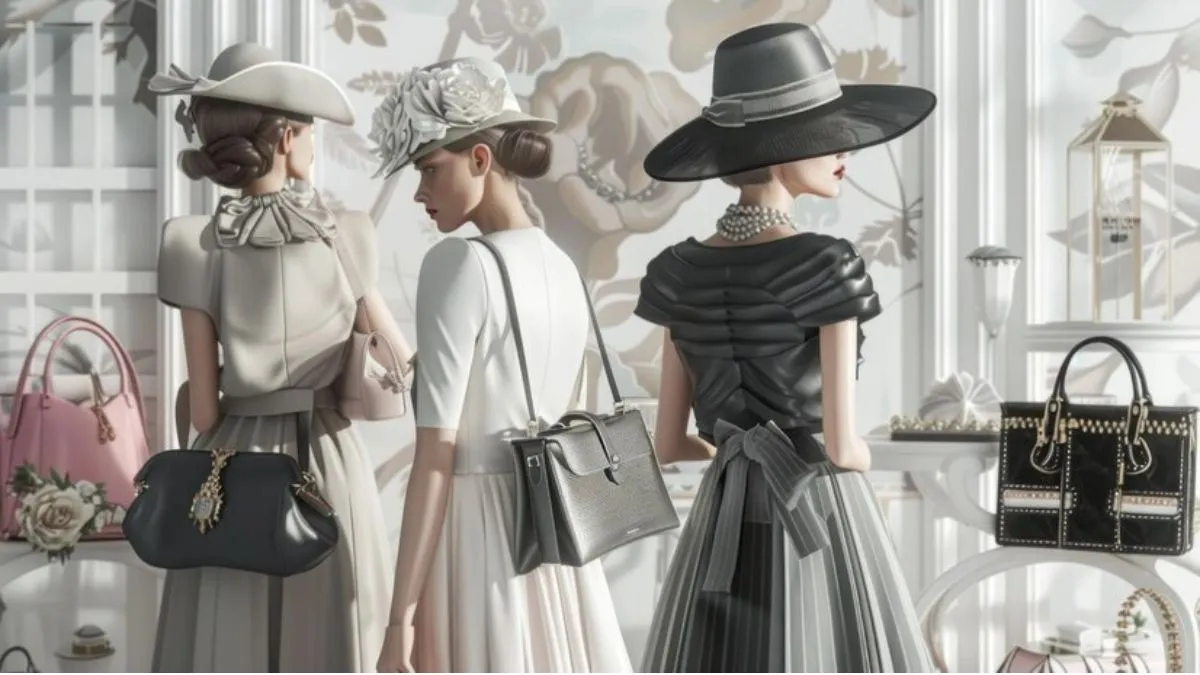
French Fashion Monogram Since 1962
French fashion monogram since 1962: French fashion has always been synonymous with elegance, sophistication, and innovation. Among the many elements that define French style, monograms have held a special place. Since 1962, French fashion monograms have evolved significantly, becoming a hallmark of luxury and prestige. In this article, we will explore the fascinating journey of French fashion monograms since 1962, examining their origins, significance, and impact on the fashion industry.
The Birth of the Modern Monogram
Saint Laurent’s Influence
In 1962, Yves Saint Laurent opened his own fashion house in Paris, marking a new era in French fashion. Not only did he revolutionize women’s fashion by popularizing trousers, but he also introduced monograms as a stylish element in his designs. Consequently, monograms became a symbol of elegance and status.
The Rise of Monogrammed Accessories
During the 1960s,(french fashion monogram since 1962) monogrammed accessories gained immense popularity. Handbags, scarves, and belts featuring monograms became highly sought after, reflecting the wearer’s taste and social standing. The trend quickly spread, and other designers began incorporating monograms into their collections.
Evolution Through the Decades
The 1970s: Bold and Expressive
In the 1970s, fashion became bolder and more expressive. Designers experimented with vibrant colors and daring patterns. Monograms evolved to reflect this shift, with larger, more intricate designs. The monogram became not just a logo but a statement piece, symbolizing the wearer’s personality and style.
The 1980s: The Age of Excess
The 1980s epitomized excess in fashion. Monograms during this period became synonymous with luxury and opulence. Designers like Louis Vuitton and Gucci capitalized on this trend, making monogrammed items must-have status symbols. The interlocking LV and double G logos became instantly recognizable and highly coveted.
The 1990s: Minimalism and Subtlety
In contrast, the 1990s saw a shift towards minimalism and subtlety. Designers like Calvin Klein and Helmut Lang embraced clean lines and understated elegance. Monograms during this era became smaller and more discreet, often appearing as subtle accents rather than prominent features.
The New Millennium: Innovation and Reinvention
Technology and Modern Techniques
With the advent of new technologies, designers gained the ability to experiment with monograms in innovative ways. Advanced printing techniques and materials allowed for greater creativity and precision. Consequently, monograms began to appear on a wider range of products, from clothing to footwear.
Collaborations and Crossovers
In the 2000s, collaborations between high fashion brands and streetwear labels brought a fresh perspective to monograms. Partnerships between brands like Louis Vuitton and Supreme resulted in unique, limited-edition pieces that combined luxury with urban style. These collaborations reinvigorated the appeal of monograms, attracting a younger, trend-conscious audience.
Sustainability and Ethical Fashion
The Shift Towards Sustainable Practices
In recent years, the fashion industry has faced increasing scrutiny over its environmental impact. Many French fashion houses have responded by adopting more sustainable practices. This shift has influenced the design and production of monogrammed items, with a focus on ethical sourcing and eco-friendly materials.
Monograms in Sustainable Fashion
Brands like Stella McCartney and Veja have incorporated monograms into their sustainable collections, proving that luxury and sustainability can coexist. These efforts have resonated with consumers who prioritize ethical fashion choices, further cementing the relevance of monograms in modern fashion.
Cultural Significance and Global Influence
Monograms as Cultural Icons
French fashion monograms have transcended their origins, becoming cultural icons recognized worldwide. The logos of brands like Chanel, Dior, and Hermès are instantly recognizable symbols of luxury and sophistication. These French fashion monograms, since their inception in 1962, have not only become deeply embedded in popular culture but also, furthermore, have appeared in films, music videos, and art. Consequently, their presence in these various mediums underscores their significant influence and widespread recognition.
Moreover, this ubiquity highlights how the monograms have transcended their original context, thereby becoming iconic symbols in contemporary visual and artistic expression. Additionally, by featuring prominently across such diverse platforms, these monograms continue to reinforce their cultural relevance and appeal. Thus, their integration into popular culture illustrates both their enduring legacy and ongoing impact.
Influence on Global Fashion
The influence of French fashion monograms extends beyond France, shaping global fashion trends. Designers around the world have drawn inspiration from French monograms, incorporating similar elements into their own creations. This cross-cultural exchange has enriched the fashion landscape, fostering creativity and innovation.
The Role of Social Media and Digital Marketing
Monograms in the Digital Age
The rise of social media has transformed the way fashion brands connect with consumers. Platforms like Instagram and TikTok have become powerful tools for showcasing monogrammed products. Influencers and celebrities often feature monogrammed items in their posts, driving demand and boosting brand visibility.
Digital Marketing Strategies
Fashion houses have embraced digital marketing strategies to promote their monogrammed collections. Online campaigns, virtual fashion shows, and interactive content have become essential components of brand promotion. These efforts have made monograms more accessible to a global audience, expanding their reach and appeal.
Monograms and Personalization
Customization and Individuality
Personalization has become a key trend in fashion, and monograms play a central role in this movement. Brands now offer customization options, allowing consumers to add their initials or unique designs to their items. This personalization, in turn, enhances the emotional connection between the consumer and the product. Moreover, it makes monogrammed items even more special. Consequently, the added personal touch not only elevates the perceived value of the item but also fosters a deeper sense of attachment. Additionally, by incorporating such personalized elements, the product becomes more than just a purchase; it transforms into a cherished keepsake. Thus, this thoughtful customization ultimately enriches the overall experience for the consumer.
Monogrammed Gifts
Monogrammed items have not only become popular as gifts but also, in addition, symbolize thoughtfulness and attention to detail. For instance, whether it’s a monogrammed handbag, a scarf, or a piece of jewelry, these items, therefore, make meaningful and memorable presents. Furthermore, their personalized nature adds an extra layer of significance, enhancing the overall sentiment behind the gift. Consequently, such items are not just stylish but also convey a deeper level of care and consideration, making them a preferred choice for many when selecting a special present.
Challenges and Criticisms
Counterfeiting and Brand Protection
The popularity of monograms has also led to challenges, particularly in the form of counterfeiting. Fake monogrammed products flood the market, undermining the value and reputation of genuine items. Fashion houses invest significant resources in brand protection, employing measures like holograms and authentication services to combat counterfeiting.
Cultural Sensitivity and Appropriation
Another criticism faced by fashion brands involves cultural sensitivity and appropriation. Some monograms and designs draw inspiration from cultural symbols, leading to accusations of cultural appropriation. Brands must navigate these issues carefully, ensuring that their designs respect and honor the cultures they draw from.
Future Trends in French Fashion Monograms
Innovative Materials and Techniques
As technology continues to advance, we can expect to see even more innovative uses of monograms. New materials, such as sustainable fabrics and smart textiles, will offer fresh possibilities for monogram design. Additionally, techniques like 3D printing and digital embroidery will enable greater creativity and precision.
Inclusivity and Diversity
The future of fashion is inclusive and diverse, and this trend will undoubtedly influence monogram design. Brands will increasingly focus on creating monograms that resonate with a broader audience, reflecting diverse cultural backgrounds and personal identities.
French Fashion Monograms Since 1962
Conclusion
French fashion monogram since 1962: French fashion monograms have come a long way since 1962, evolving in response to changing trends, technologies, and consumer preferences. From the bold designs of the 1970s to the sustainable practices of today, monograms continue to be a powerful symbol of luxury, style, and individuality. As the fashion industry moves forward, monograms will undoubtedly remain a central element, adapting to new challenges and opportunities while maintaining their timeless appeal.
FAQs
What is the significance of monograms in French fashion?
Monograms in French fashion symbolize elegance, luxury, and status. They serve as a mark of distinction and brand identity, making items instantly recognizable.
How have monograms evolved since 1962?
Since 1962 (french fashion monogram since 1962), monograms have evolved from simple logos to intricate designs that reflect changing fashion trends. They have adapted to new technologies, materials, and consumer preferences.
Why are monogrammed items popular?
Monogrammed items are popular because they symbolize luxury and sophistication. They also offer a personalized touch, making them unique and special to the owner.
What challenges do fashion brands face with monograms?
Fashion brands face challenges such as counterfeiting and cultural sensitivity. Protecting brand integrity and ensuring respectful designs are ongoing concerns.
What is the future of monograms in fashion?
The future of monograms in fashion will involve innovative materials, advanced techniques, and a focus on inclusivity and diversity. Monograms will continue to evolve, reflecting new trends and consumer values.
Fashion
Mama Bear Sweatshirt – Embracing Comfort and Style with a Message of Love
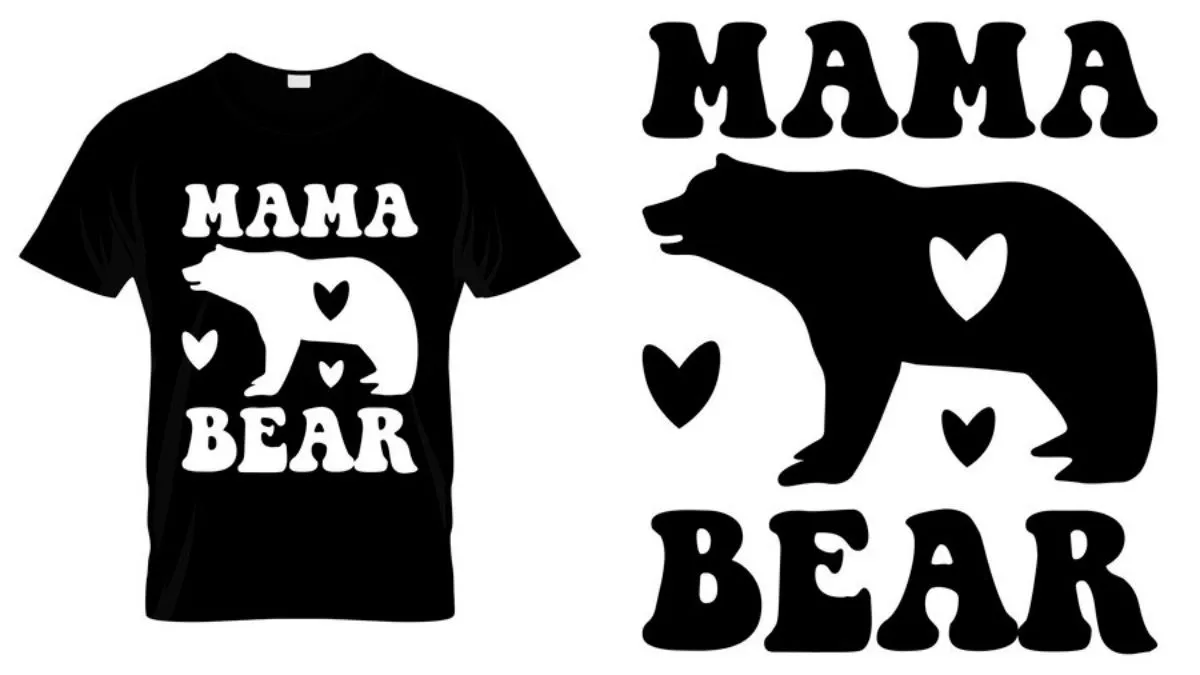
The “Mama Bear” sweatshirt has quickly become a staple in casual fashion, particularly for mothers who want a comfortable, stylish way to express their maternal pride. With its blend of cozy warmth, versatility, and sentimentality, this sweatshirt embodies the strength and warmth that mothers naturally provide. Let’s dive into what makes this piece of clothing so special.
What is a Mama Bear Sweatshirt?
Origin and Meaning of the Mama Bear Concept
The term “Mama Bear” symbolizes the fierce protective nature that many moms embody. Inspired by how bears defend their cubs, this phrase resonates with mothers who identify with strength, protection, and nurturing. It’s more than just a sweatshirt—it’s a badge of honor for moms who aren’t afraid to show their love.
How the Sweatshirt Represents Motherhood and Protection
Wearing a Mama’s Bear sweatshirt isn’t just about warmth. It’s a way to wear motherhood proudly. This sweatshirt offers comfort and security, much like the qualities moms bring to their families every day.
Why is the Mama Bear Sweatshirt So Popular?
The Symbol of Strength and Love
The Mama Bear sweatshirt has gained popularity as a fashion trend due to its strong, meaningful symbolism. It reminds people of a mother’s fierce love and loyalty, making it a favorite among women who embrace their role with pride.
A Trending Gift for Moms
Mama Bear sweatshirts have also become a go-to gift for Mother’s Day, birthdays, or even baby showers. It’s an easy, stylish, and heartfelt gift that resonates with the recipient on a deeper level.
Types of Mama Bear Sweatshirts
Materials and Fabrics
Mama Bear sweatshirts come in a variety of materials, from soft cotton to plush fleece, to cater to different preferences.
- Cotton and Cotton Blends: Perfect for those who prefer a natural, breathable feel, cotton Mama Bear sweatshirts are comfortable for everyday wear.
- Fleece-Lined for Extra Warmth: For chilly weather, fleece-lined sweatshirts offer that extra layer of insulation, making them ideal for winter months.
Colors and Designs
Whether you prefer neutral shades or bold, vibrant colors, Mama Bear sweatshirts cater to every taste.
- Classic Neutral Tones: Shades like gray, black, and navy offer a timeless, versatile look.
- Vibrant Colors and Patterns: For those who like to stand out, there are options in bright colors and eye-catching designs.
Seasonal Varieties
Sweatshirts come in different weights and fabrics, making them suitable for various seasons.
- Lightweight for Spring and Fall: These versions are perfect for layering during milder weather.
- Heavy and Warm for Winter: Made from thicker materials, these sweatshirts provide warmth and comfort on colder days.
Choosing the Perfect Mama Bear Sweatshirt
Understanding Sizing Options
Since sizing can vary, it’s essential to check size charts before purchasing to ensure a proper fit. Some sweatshirts may run large for a more relaxed fit, while others are more fitted.
Personalizing with Custom Designs
For a truly unique touch, consider ordering a custom Mama Bear sweatshirt. Many sellers allow you to add names, colors, or other personal touches that make the sweatshirt one-of-a-kind.
The Emotional Connection – Why Moms Love Mama Bear Sweatshirts
A Symbol of Motherhood
The Mama Bear sweatshirt is more than clothing; it’s a reflection of motherhood’s fierce and nurturing aspects. Moms wear it with pride, celebrating the journey of raising their little ones.
Embracing the “Mama Bear” Persona
For many, wearing a Mama Bear sweatshirt is like wearing a superhero cape. It’s an acknowledgment of the protective and loving role that moms play in their children’s lives.
Styling Tips for Your Mama Bear Sweatshirt
Casual Everyday Look
Pair your sweatshirt with jeans or leggings for a relaxed, effortless look. Add a pair of sneakers, and you’re ready to take on the day!
Dressing It Up with Accessories
Add a few statement pieces like a necklace or bold earrings to elevate your look. A crossbody bag or stylish sneakers can also enhance your outfit.
Seasonal Layering
In colder months, layer with a denim or leather jacket for a chic, layered style that keeps you cozy.
How to Care for Your Mama Bear Sweatshirt
Washing and Drying Tips
To keep your sweatshirt looking fresh, wash it in cold water on a gentle cycle. Avoid high heat when drying to prevent shrinkage.
Maintaining Print and Fabric Quality
Turn the sweatshirt inside out to preserve any printed design and avoid using harsh detergents to maintain its softness.
Where to Buy High-Quality Mama Bear Sweatshirts
Online Retailers
Major e-commerce sites like Amazon, Etsy, and specialty mom-and-baby stores offer a wide selection of Mama Bear sweatshirts.
Small Businesses and Local Boutiques
Supporting local shops can lead to unique finds, and many small businesses offer handmade or limited-edition options.
Custom and Handmade Options
Platforms like Etsy allow you to order custom-made sweatshirts, which makes it easy to create a personalized and heartfelt gift.
Perfect Occasions for Wearing a Mama Bear Sweatshirt
Family Outings and Playdates
Perfect for trips to the park, zoo, or family gatherings, this sweatshirt lets moms showcase their pride in a fun, casual way.
Cozy Homewear for Relaxing Days
On days spent at home, the Mama Bear sweatshirt is ideal for staying cozy and comfortable while keeping up with daily activities.
Gifting for Mother’s Day and Special Occasions
Mama Bear sweatshirts are popular Mother’s Day gifts, but they’re also great for baby showers, birthdays, or holidays.
Pros and Cons of Owning a Mama Bear Sweatshirt
Pros: Comfort, Style, and Sentimentality
These sweatshirts are cozy, versatile, and carry a meaningful message that resonates with many moms.
Cons: Potential Quality Issues and Style Limitations
Some sweatshirts may not hold up well after repeated washing, and certain designs may be too casual for some settings.
Conclusion
Mama Bear sweatshirts have quickly earned their place in the hearts of mothers worldwide. With their comfortable style, heartfelt message, and variety of choices, they allow moms to embrace their protective, loving nature proudly.
FAQs
- What makes a Mama Bear sweatshirt different from other mom-themed clothing? A Mama Bear sweatshirt symbolizes protection and strength, specifically highlighting a mom’s fierce love and care.
- Can I find matching Mama Bear sweatshirts for kids or family sets? Yes, many brands offer family sets, including matching sweatshirts for kids and even dads.
- Are Mama Bear sweatshirts eco-friendly? Some brands offer eco-friendly versions made from sustainable materials.
- Do Mama Bear sweatshirts come in plus sizes? Yes, many options are available in a wide range of sizes, including plus sizes.
- How do I know if a Mama Bear sweatshirt is of good quality? Check customer reviews and material descriptions for indicators of quality and comfort.
Fashion
The Ultimate Guide to Rhinestone Belt: A Sparkling Fashion Accessory

Rhinestone belt have made a glittering statement in the fashion world for decades. Known for their dazzling sparkle and versatility, these belts add an eye-catching element to any outfit. Originally popularized in the Western and country fashion scenes, rhinestone belts have evolved to suit a variety of styles and occasions. In this guide, we’ll explore everything you need to know about rhinestone belts, from their history to styling tips and more.
What is a Rhinestone Belt?
A rhinestone belt is a decorative belt featuring rhinestones—synthetic gems designed to resemble diamonds. These stones are often set in metal or leather, creating a sparkling accessory that can elevate any outfit. Rhinestone belts come in a variety of colors, shapes, and sizes, making them a versatile addition to any wardrobe.
The Rise of Rhinestone Belts in Fashion
Rhinestone belts have cycled through waves of popularity in fashion history. In the 1970s and 1980s, they were frequently worn by country music icons and rock stars. In recent years, these belts have made a comeback in pop culture, often appearing in social media influencers’ posts and high-end fashion runways.
Different Styles of Rhinestone Belts
- Casual vs. Formal: Casual rhinestone belts tend to have simpler designs, making them suitable for everyday wear. Formal belts, however, often feature intricate patterns and high-shine stones that pair well with evening wear.
- Wide vs. Thin: Wide rhinestone belts make a bold statement and work well with dresses or high-waisted pants, while thinner belts are a subtle choice that can complement nearly any outfit.
- Western-Inspired: Known for their chunky stones and leather bases, Western-style rhinestone belts are iconic and often feature metal studs and engraved buckles.
How to Choose the Perfect Rhinestone Belt
When selecting a rhinestone belt, consider your body type, the outfit you plan to wear, and the occasion. Here are a few tips:
- Size: Opt for a size that comfortably fits your waist or hips, depending on where you intend to wear the belt.
- Style Compatibility: Match the belt’s style to your wardrobe. A simple rhinestone belt works well with casual outfits, while a more embellished one is perfect for formal events.
Rhinestone Belts for Women
For women, rhinestone belts offer endless styling possibilities. Pair a wide rhinestone belt with a plain dress to add flair, or wear a thin, sparkly belt with jeans for a touch of glamour. Popular brands like B-Low The Belt and Gucci offer elegant rhinestone belts that are both high-quality and fashionable.
Rhinestone Belts for Men
Men can also embrace the rhinestone trend by opting for belts with subtle sparkle or unique detailing. These belts add character to classic jeans and shirt combinations, especially for casual outings or concerts. Western-inspired belts with rhinestone details are a popular choice for men, reflecting a rugged yet stylish look.
DIY Rhinestone Belts
Creating a custom rhinestone belt is an exciting way to personalize your accessory collection. You’ll need a plain belt, rhinestones, glue, and creativity. Simply arrange and attach the rhinestones in a pattern of your choice, allowing the glue to dry before wearing. DIY rhinestone belts are perfect for adding a unique, handmade touch to your wardrobe.
Top Materials Used in Rhinestone Belts
- Leather: Durable and classic, leather is a popular base material for rhinestone belts.
- Faux Leather: For a more affordable and cruelty-free option, faux leather is a great alternative.
- Fabric: Some belts use fabric bases, which allow for more flexibility and comfort but may lack the durability of leather.
How to Care for Your Rhinestone Belt
To keep your rhinestone belt looking its best, gently wipe it with a soft cloth to remove dust and grime. For a more thorough cleaning, use a damp cloth with mild soap on the belt’s surface, avoiding direct contact with the rhinestones to preserve their sparkle. Store the belt in a soft pouch to prevent scratches and damage.
When and Where to Wear Rhinestone Belts
Rhinestone belts are versatile accessories that can be dressed up or down depending on the occasion. They are ideal for weddings, parties, and concerts, but they can also add flair to a casual day outfit. Pair them with jeans, skirts, dresses, or even suits for a standout look.
Popular Rhinestone Belt Brands
If you’re looking to invest in a rhinestone belt, consider brands like Swarovski, Gucci, and Michael Kors. These brands are known for their high-quality materials and unique designs, offering a range of options from understated elegance to bold statement pieces.
The Environmental Impact of Rhinestone Belts
Sustainability is an important consideration in fashion, and rhinestone belts are no exception. Some brands are beginning to use recycled materials and more sustainable practices in their production processes, which can help minimize the environmental impact of these accessories.
Rhinestone Belt Trends for 2023
This year, rhinestone belts are all about maximalism and bold styling. Larger rhinestones, mixed materials, and statement buckles are in trend, and influencers are embracing these styles on social media platforms, making rhinestone belts a must-have accessory.
Conclusion
Rhinestone belts are a timeless and versatile accessory that can add a touch of sparkle to any outfit. With styles ranging from subtle to extravagant, there’s a rhinestone belt for every fashion taste and occasion. So, why not experiment and add a little glimmer to your wardrobe?
FAQs
1. What is the best way to clean a rhinestone belt?
Gently wipe the belt with a soft cloth and use mild soap with water if needed. Avoid direct contact with the rhinestones.
2. Are rhinestone belts suitable for everyday wear?
Yes, depending on the design. Subtle rhinestone belts can be worn daily, while more extravagant styles are best for special occasions.
3. Can rhinestone belts be worn by men and women?
Absolutely! Rhinestone belts are unisex and can add flair to both men’s and women’s outfits.
4. Where can I buy quality rhinestone belts?
Quality rhinestone belts can be found at brands like Swarovski, Gucci, and Michael Kors, as well as online fashion retailers.
5. How can I repair missing rhinestones on my belt?
You can reattach lost rhinestones with fabric glue or take the belt to a professional for restoration.
Fashion
Rey Mysterio Nirvana Inspired Shirt: A Bold Tribute to Pop Culture Fusion

Rey Mysterio, a legendary figure in the wrestling world, is known not only for his skills in the ring but also for his unique fashion sense. Recently, he made waves by donning a Rey Mysterio Nirvana inspired shirt that caught the attention of wrestling fans and music lovers alike. This seemingly simple fashion choice speaks volumes, bridging the worlds of wrestling and iconic 90s rock culture. Let’s explore the story behind Rey Mysterio’s Nirvana-inspired shirt, why it resonates with fans, and how it represents a cultural fusion that goes beyond wrestling.
Introduction
Rey Mysterio, one of wrestling’s most iconic figures, is renowned for his high-flying moves and striking fashion. But his recent choice of a Nirvana-inspired shirt brought an extra layer of interest, blending wrestling culture with the 90s grunge scene. It’s more than just a fashion choice; it’s a nod to a legendary music era, and it tells a story that resonates with fans across generations.
Rey Mysterio’s Influence Beyond Wrestling
Rey Mysterio is not only a celebrated wrestler but a style icon. Known for his brightly colored masks and dynamic outfits, Mysterio uses fashion to craft a unique identity. Each choice, from his mask to his shirt, speaks to fans, blending symbolism with self-expression.
Nirvana’s Legacy in Pop Culture
Nirvana, led by the legendary Kurt Cobain, reshaped music in the 90s with raw lyrics, grungy sound, and unapologetic attitudes. Their influence still echoes, with grunge style reappearing in modern fashion. To see this iconic band referenced in wrestling underscores their enduring impact on popular culture.
The Story Behind the Nirvana-Inspired Shirt
When Rey Mysterio stepped into the ring wearing a Nirvana-inspired shirt, fans were quick to notice. This choice was not only stylish but a statement. Whether paying homage to a band he admires or connecting with fans who grew up in the 90s, Mysterio’s shirt speaks volumes.
Design Elements of the Shirt
The shirt itself merges Mysterio’s wrestling persona with classic Nirvana graphics. Featuring distressed designs and grunge-inspired fonts, the shirt looks like a blend of Nirvana’s famous smiley face with Mysterio’s iconic masked image. The subtle blend pays homage to Nirvana while retaining Mysterio’s unique flair.
Cultural Significance of the Shirt
The shirt represents more than just fashion; it’s a bridge between wrestling and rock culture. Nirvana’s grunge ethos—raw, rebellious, and authentic—finds a surprising harmony in the wrestling world. Mysterio’s choice to wear this shirt isn’t random; it’s a message of unity for fans of both genres.
Rey Mysterio and Music Iconography in Wrestling
This isn’t the first time Mysterio, or wrestling in general, has nodded to music culture. Wrestlers often borrow from music icons, incorporating legendary symbols into their gear. By referencing Nirvana, Mysterio continues this trend, bringing his own style into the ring.
Fashion as a Statement in Wrestling
For many wrestlers, fashion is a powerful tool for expression. Rey Mysterio, in particular, uses every piece of his attire to connect with fans. His Nirvana shirt joins a long line of creative choices that pay homage to different elements of culture, music, and art.
Fan Reactions and Social Media Buzz
The moment Mysterio appeared in the Nirvana shirt, fans took to social media. Comments ranged from admiration to nostalgia, with some expressing appreciation for Mysterio’s nod to 90s culture. Twitter and Instagram buzzed with photos and reactions, showing how fans love this unique style choice.
The Rise of 90s Nostalgia in 2024 Fashion
Nostalgia has made its way back into mainstream fashion, and Mysterio’s shirt taps into this trend perfectly. From oversized band tees to distressed denim, 90s fashion is everywhere. His Nirvana-inspired look is a natural fit for the times, uniting fans across music and wrestling.
Where to Find Similar Nirvana-Inspired Styles
For those inspired by Mysterio’s look, finding similar 90s-inspired styles is easier than ever. Vintage stores, band merchandise retailers, and even popular brands like Urban Outfitters offer collections that feature iconic music graphics. Look for shirts with distressed designs, grunge fonts, or Nirvana’s famous smiley face.
The Impact of Mysterio’s Shirt on Wrestling Fashion
Mysterio’s Nirvana shirt could spark a trend in wrestling fashion, as fans and wrestlers alike adopt more music-inspired gear. His choice encourages others in the industry to use fashion as a means of connecting with their audience, expanding the way wrestling intersects with popular culture.
Nirvana and Wrestling: A Surprising Harmony
Although wrestling and grunge music might seem worlds apart, both share themes of rebellion and authenticity. Nirvana’s music resonated with fans who felt misunderstood, just as wrestling appeals to fans who see themselves as underdogs. Mysterio’s shirt embodies this shared spirit of individuality.
Rey Mysterio’s Role in Expanding Wrestling’s Appeal
Mysterio has always been more than just a wrestler; he’s a cultural icon who brings new audiences to the sport. By incorporating iconic references like Nirvana, he broadens wrestling’s appeal and draws fans who may not typically watch wrestling but share a love for 90s music.
Conclusion
Rey Mysterio Nirvana inspired shirt is more than a fashion statement. It’s a celebration of two distinct yet surprisingly connected worlds: wrestling and 90s grunge. His choice speaks to fans of all kinds, from wrestling aficionados to music enthusiasts, proving that fashion in wrestling can be both meaningful and iconic.
-

 General9 months ago
General9 months agoCask Technologies LLC Lawsuit: An In-Depth Look into the Legal Battle
-

 Technology9 months ago
Technology9 months agoFacilities That Use Cutting-Edge Medical Technology for Intubation
-
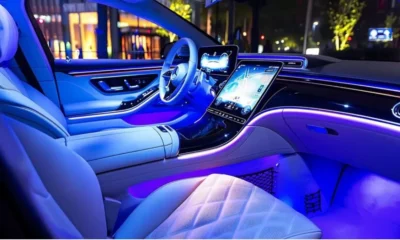
 Technology9 months ago
Technology9 months ago4416-4420 Technology Drive, Fremont, CA 94538: A Hub of Innovation and Growth
-

 Games9 months ago
Games9 months agoThe Ultimate Guide to Appfordown Games
-

 Crypto9 months ago
Crypto9 months agoCrypto-Legacy.App Software: Revolutionizing Cryptocurrency Management
-

 Technology9 months ago
Technology9 months agoRevo Technologies Murray, Utah: A Leader in Innovative Solutions
-
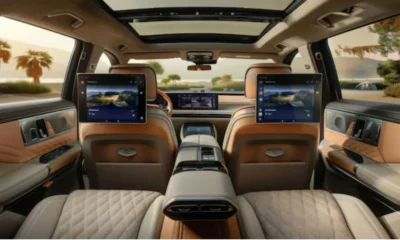
 Entertainment9 months ago
Entertainment9 months agoThe Ultimate Guide to Rear Seat Entertainment Systems
-
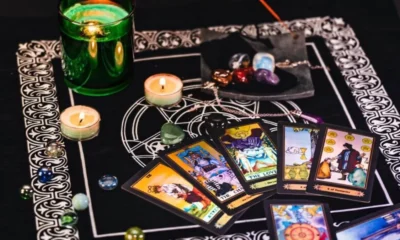
 Games7 months ago
Games7 months agoVanessa-Casino.com Mystical Card Game: A Journey into Enchantment
